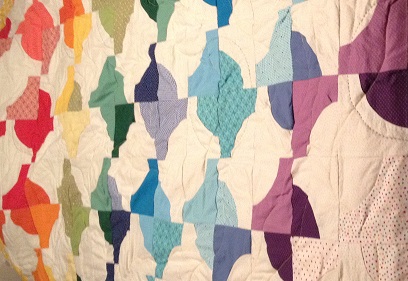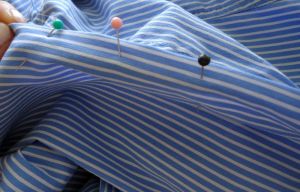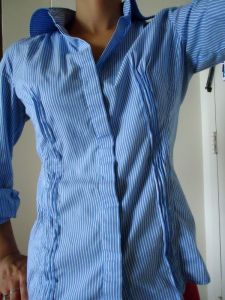I live in a studio alcove. I have it set up so the bedroom is a separate area, with the back of my dresser facing my living room area. When I moved in, my parents told me I should make something to cover it. Now, over 18 months later, I have finally bothered to start something.
I bought myself a pretty kit that looks like Tiffany stained glass of pink dogwood blossoms on a green background. I decided I need to practice my hand quilting stitches, and something for my own apartment (not a gift) is the perfect medium for that because I don’t have worry about messing up on someone else’s present.
I sewed the kit together per the instructions, but adding two strands of ribbon that I’ll use to hang it. (I will probably end up knotting the ribbon to make it a little shorter.) Then I pinned the kit all over and began the quilting. I had intended to begin on the trip to Spry’s wedding, but I forgot sewing needles. I had to wait until we got there to buy needles somewhere and then I was able to start.
I have a book of quilting stitches, which I used. I picked some simpler ones and practiced on a piece of scrap paper. I started with a stem stitch. I sewed all the way around the whole edge of the outer pink border with a stem stitch.
I’m in the process of highlighting the petals of one of the blossoms with a cable stitch.
My book is called “The Quilter’s Stitch Bible.” Sometimes I find the instructions a little confusing, but for the simpler stitches – with practice – I usually manage to work it out.
Eventually I’ll finish it and hang it up and I suppose I’ll have to post another picture then. I haven’t finished the quilting – the flower isn’t actually done, and I would like to do something on the inner pink border, and maybe a second flower.


















